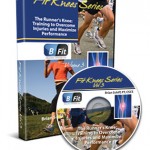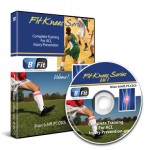Brian Schiff’s Blog
Injury Prevention, Sports Rehab & Performance Training Expert
In the majority of patients I see with knee pain or knee dysfunction, I uncover gluteal weakness and poor proximal muscular stability. This can cascade into overpronation, vagus collapse, poor balance, and any number of kinetic chain issues. While this may not be a big deal for sedentary individuals, it becomes a very big deal for athletes and those performing repetitive loading.
When searching for the best exercises to selectively strengthen the gluteal muscles, it is always wise to see what science has to say. More is not always better. I am all for efficiency and finding the most effective exercises in activating the glute over the tensor fascia lata (TFL). In this post, I am sharing a good exercise to do just that. Prior research has indicated that sidestepping and clamshells are very effective in doing just this. Click here to read a prior post on this.
The video below will walk you through his to do the running man exercise.
Click here to read my PFP column on this exercise.
Improving proximal hip stability and reducing frontal plane collapse is critical for protecting the knee. Poor frontal plane control often contributes to anterior knee pain, IT band syndrome, shin splints, plantar fasciitis and other injuries. This exercise is an advance progression of the standing pallof press, and it is very effective for enhancing single leg strength as well as hip/core stability.
Click here to read my full column on this exercise in PFP Magazine.
Unfortunately, too many athletes who recover from ACL tears go on to suffer another injury within a short period of time. Click here to read a prior post on secondary injuries. There are differing opinions on when or if there is an exactly “right time” to clear an athlete for return to play.
We already know that athletes have persistent weakness and asymmetry at 1 year post-op and even beyond. I recently had one of my collegiate soccer players re-tear while helping out with a youth soccer camp. She had not yet done hop testing with me or been cleared for full soccer, but as she was 1 year out she did not think it would be an issue playing with 12 year-old girls. It only took 20 minutes before she suffered a non-contact re-injury and lateral meniscus tear.
Consider the following paper that reveals low rates of patients meeting return to sport (RTS) criteria at 9 months post-op:
https://www.ncbi.nlm.nih.gov/pubmed/29574548
Another paper recent published in the Journal of Sports Rehabilitation revealed marked deficits in balance and hop testing at 6 and 9 months post-op:
https://www.ncbi.nlm.nih.gov/pubmed/29466066
A recent paper in the American Journal of Sports Medicine (https://www.ncbi.nlm.nih.gov/pubmed/29659299) lists positive predictors of a return to knee-strenuous sport 1 year after ACL reconstruction were male sex, younger age, a high preinjury level of physical activity, and the absence of concomitant injuries to the medial collateral ligament and meniscus.
In 2016, research in the American Journal of Sports Medicine revealed delaying return to sport at least 9 months markedly reduced re-injury risk in those who passed RTS testing. Click below for more on that study:
https://www.ncbi.nlm.nih.gov/pubmed/27162233
So, where are we now? I employ multiple functional tests including the Y-Balance Test, FMS, single leg squatting, hand held dynamometry, hop testing, qualitative movement assessment and jump landing assessments. But, is that enough?
I find that many patients and clients lack dynamic shoulder and pillar stability. Assessing this with tall plank arm taps or tall plank Y reaches can tell you a lot about one’s ability to stabilize and resist gravity in single arm support. In light of the insufficiencies I see, I prefer to use exercises that encourage integrated shoulder, torso and hip stability.
Improving shoulder and torso stability is important for overhead athletes, wrestlers, MMA competitors as well as those with any shoulder instability. This exercise is a great way to build dynamic stability and postural stability.
Click here to read my entire online column for PFP Magazine on this exercise including progressions and regressions. I think you will find this movement both challenging and rewarding for you or your clients.
Today through the end of Memorial Day I am offering 50% off my entire product line of e-books and DVDs on my website. So if you or your friends and colleagues are looking for information on rotator cuff pain, frozen shoulder treatment, ACL prevention, or programs to eliminate knee pain in runners or those with osteoarthritis, now is the time to grab one of my guides.
Visit http://www.brianschiff.com/Products.asp to see my catalog of products and simply enter the code BFIT50 in the coupon box at checkout. The sale will end Monday at midnight.



